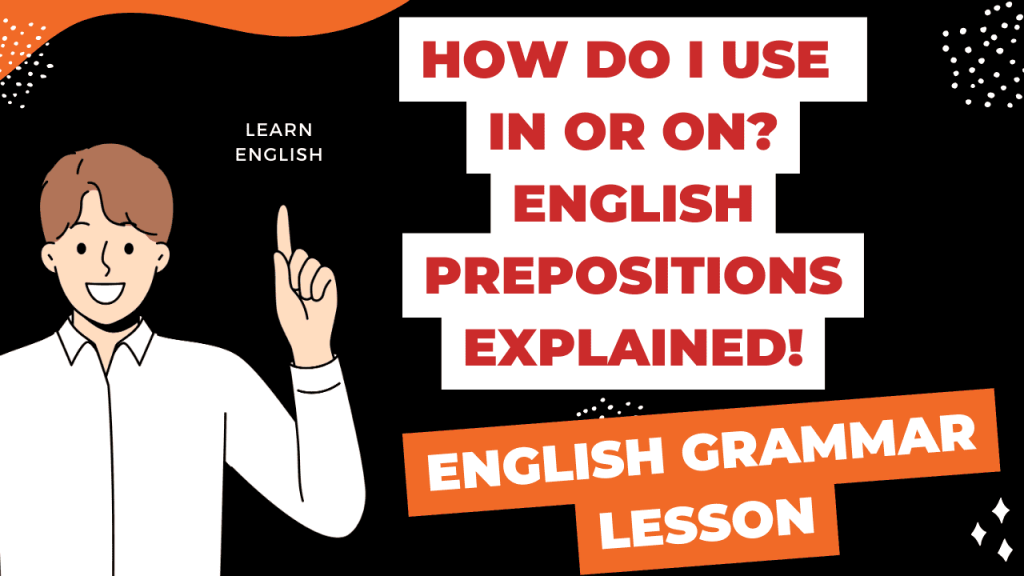
How do I use IN or ON? The prepositions “in” and “on” can indeed be tricky to use correctly in English. Allow me to explain their usage in various contexts.
General Usage of “In” and “On”
1- We generally use “in” to indicate being inside something, within a confined space, or within a certain period.
Examples:
- I am in the classroom.
- The cat is in the box.
- She was born in May.
2- We typically use “on” to indicate being on top of something, a surface, or a specific day or date.
Examples:
- The book is on the table.
- The picture is on the wall.
- The meeting is on Monday.
Exceptions and Additional Uses
However, there are certain exceptions and additional uses for each preposition:
For “In”:
a) Countries, cities, and regions: I live in Canada.
b) Modes of transportation: She travels in a car.
c) Containers: The milk is in the fridge.
d) Time expressions: I will see you in an hour.
For “On”:
a) Days of the week: I have a meeting on Wednesday.
b) Dates: My birthday is on the 8th of July.
c) Surfaces: The book is on the desk.
d) Electronic devices: I am on my phone.
Let’s delve deeper into the usage of “in” and “on” in different contexts.
“In” is used for longer periods of time, such as months, years, seasons, and centuries.
Detailed Examination of Usage
1. Time:
Examples:
- We will have a vacation in the summer.
- She was born in 1990.
“On” is used for specific days and dates.
Examples:
- I have a doctor’s appointment on Monday.
- Our anniversary is on the 14th of February.
2. Location:
“In” is used to express being inside a larger area or enclosed space.
Examples:
- The cat is in the house.
- I live in London.
“On” is used to indicate being on a surface or a specific point.
Examples:
The book is on the shelf.
- The picture is on the wall.
3. Transportation:
“In” is used for modes of transportation where you are enclosed or inside.
Examples:
- She travels in a car.
- We flew in an airplane.
Understanding Exceptions and Context
“On” is used for modes of transportation where you are on the surface.
Examples:
- He is on a bike.
- They are on a boat.
Remember, there are always exceptions and additional uses for these prepositions. It’s important to consider the specific context and usage patterns.
Conclusion
In conclusion, understanding how do I use IN or ON may take some practice, but by considering the specific context and following the general guidelines, you can use these prepositions correctly. If you have any specific situations in mind, feel free to ask for further clarification.